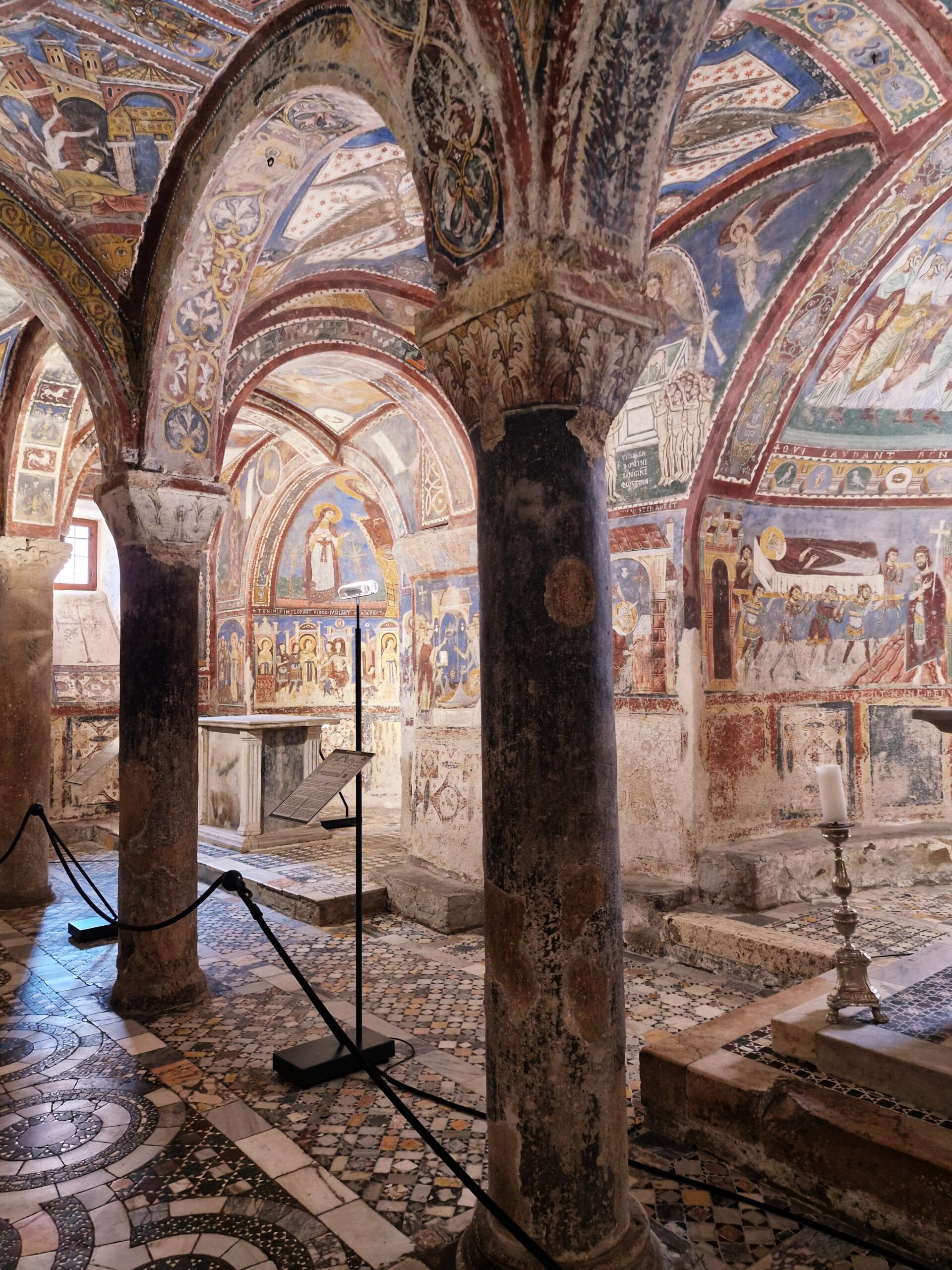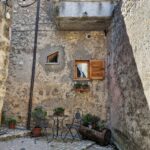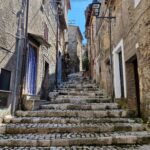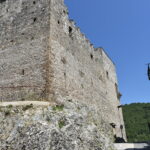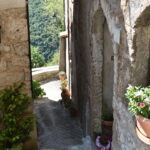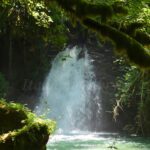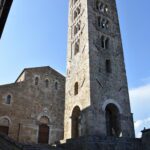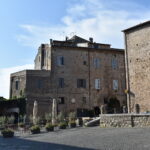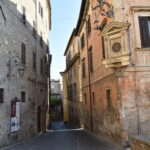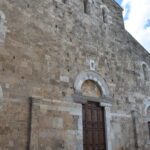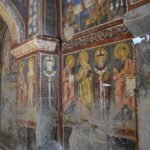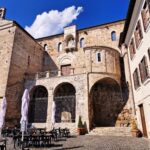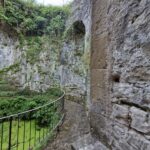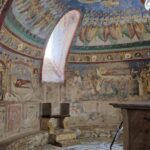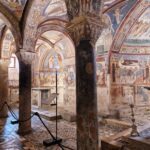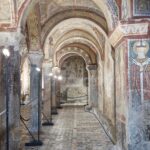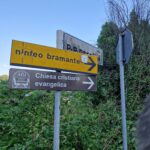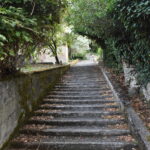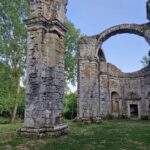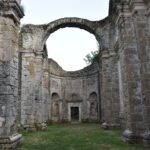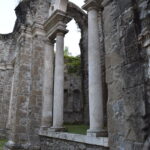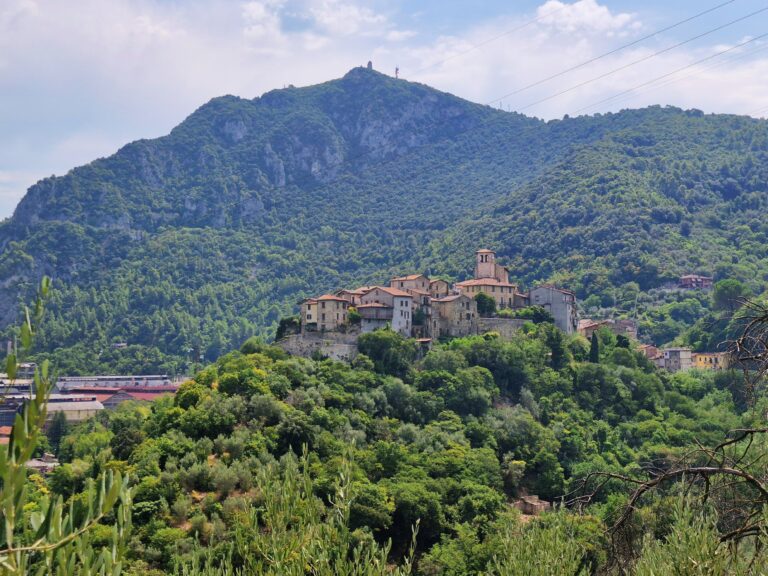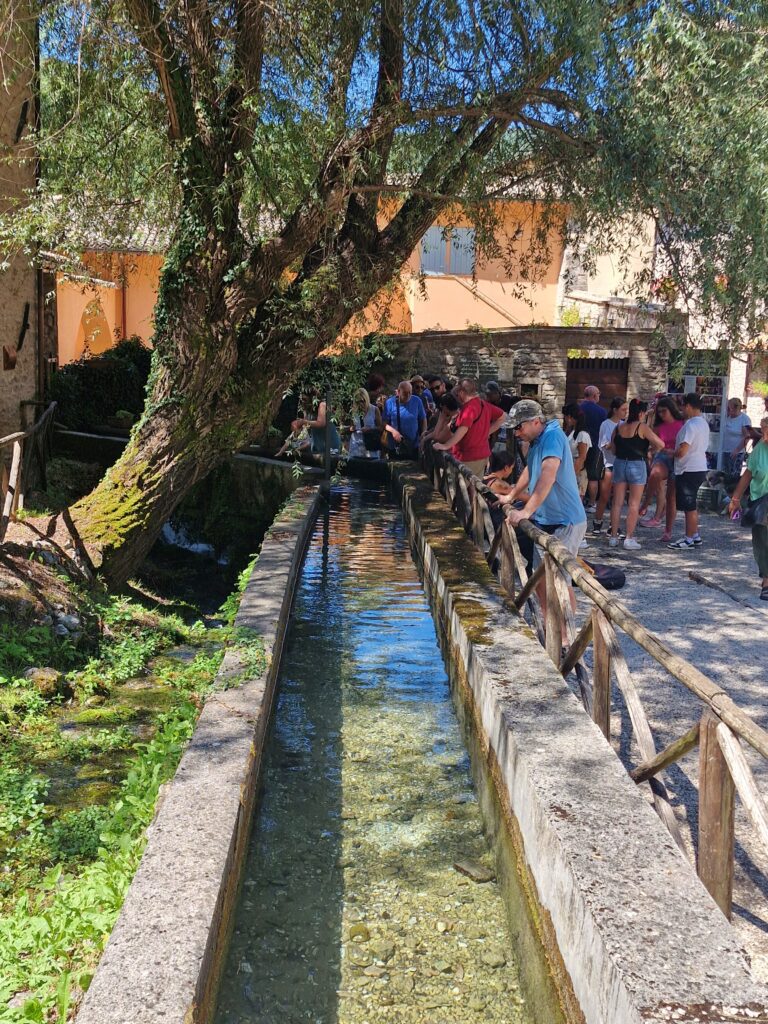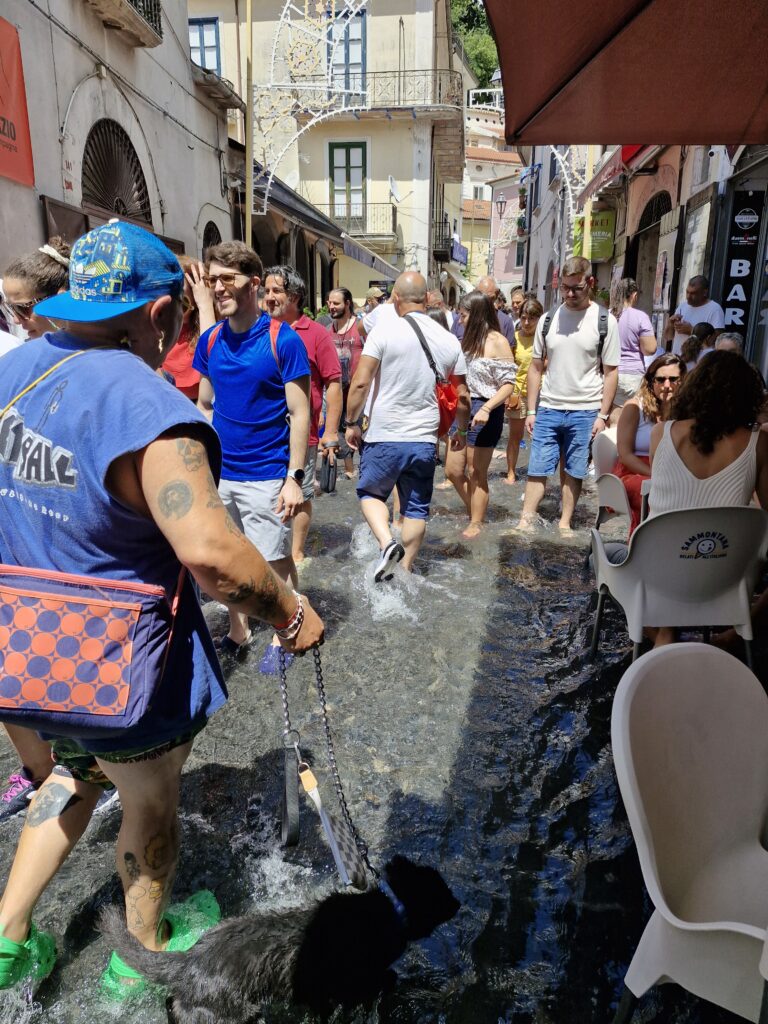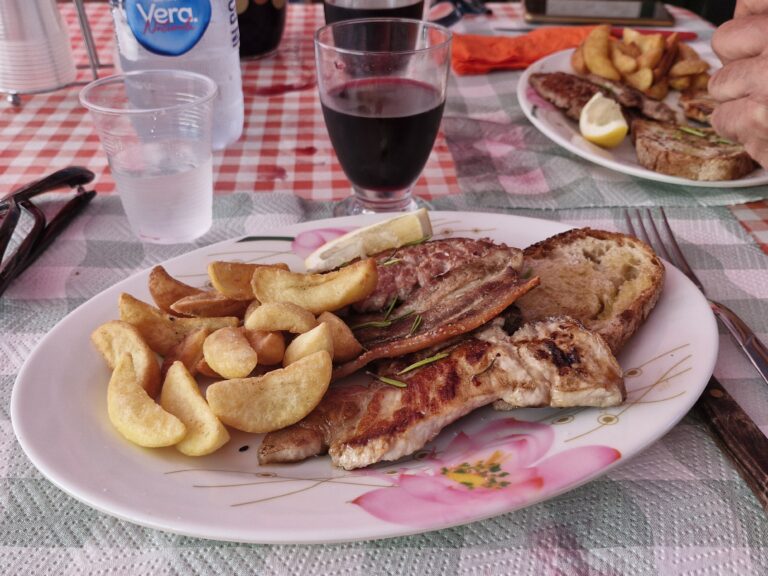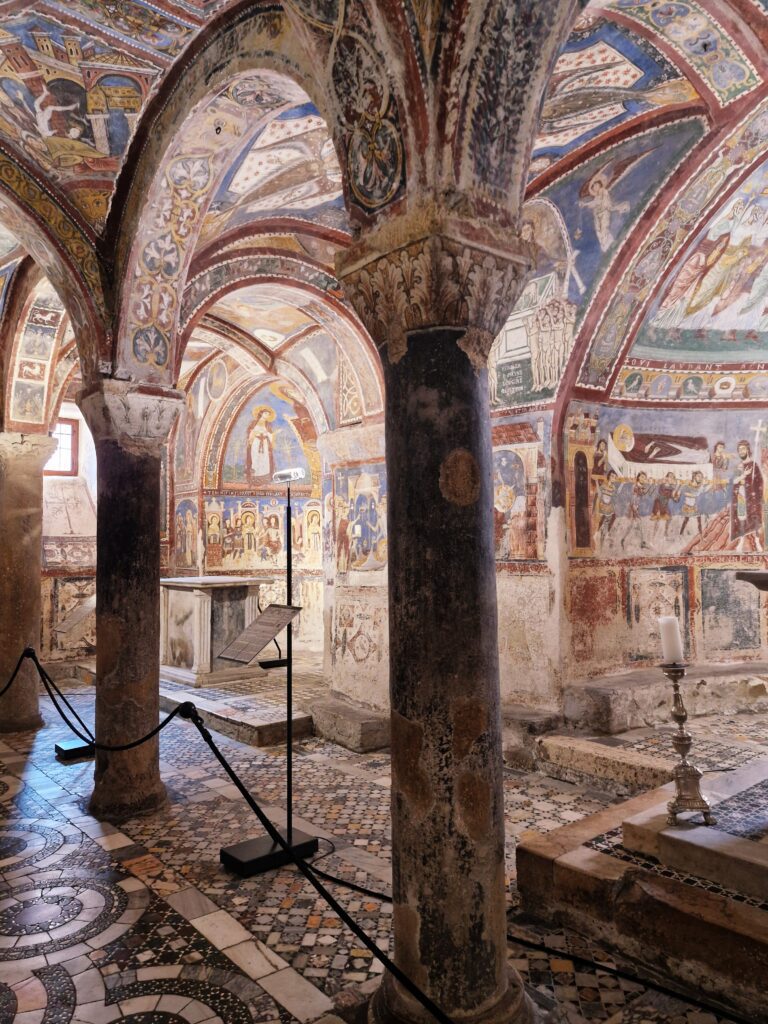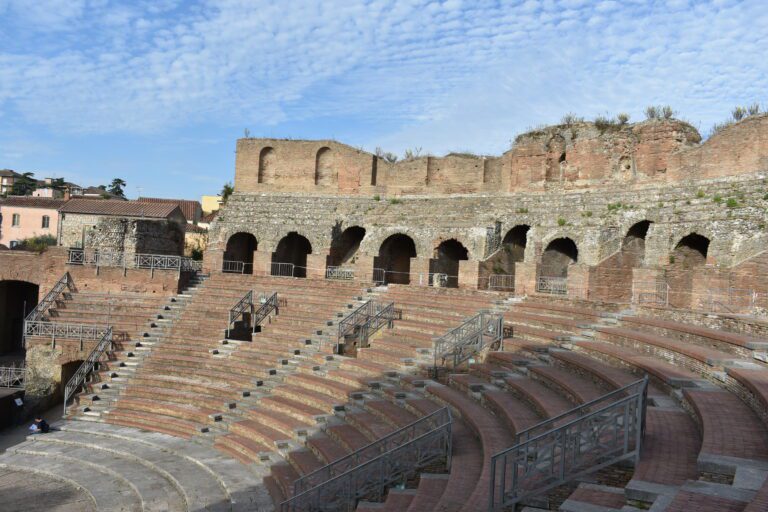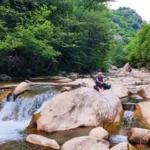Lazio is an incredibly popular region of Italy. The capital is, of course, the main attraction, visiting by millions of tourists from around the world, but it’s not worth focusing solely on this city. What to see near Rome? There’s quite a lot : stunning landscapes, sea, food, history, culture – everything the average tourist can expect on holidays.
What to see near Rome – Trevi Nel Lazio
Lazio also boasts lesser-visited towns where time seems to have stood still. Such a town is Trevi Nel Lazio, nestled in the mountains at an altitude of 800 meters. Small, with a population of 1,700, it’s a place where everyone knows everyone. For such a small town, it’s quite well-equipped for life: there are four or five cafes, a restaurant, a school, two or three grocery shops, an ATM (but not a bank), a mobile post office, and, of course, a castle.
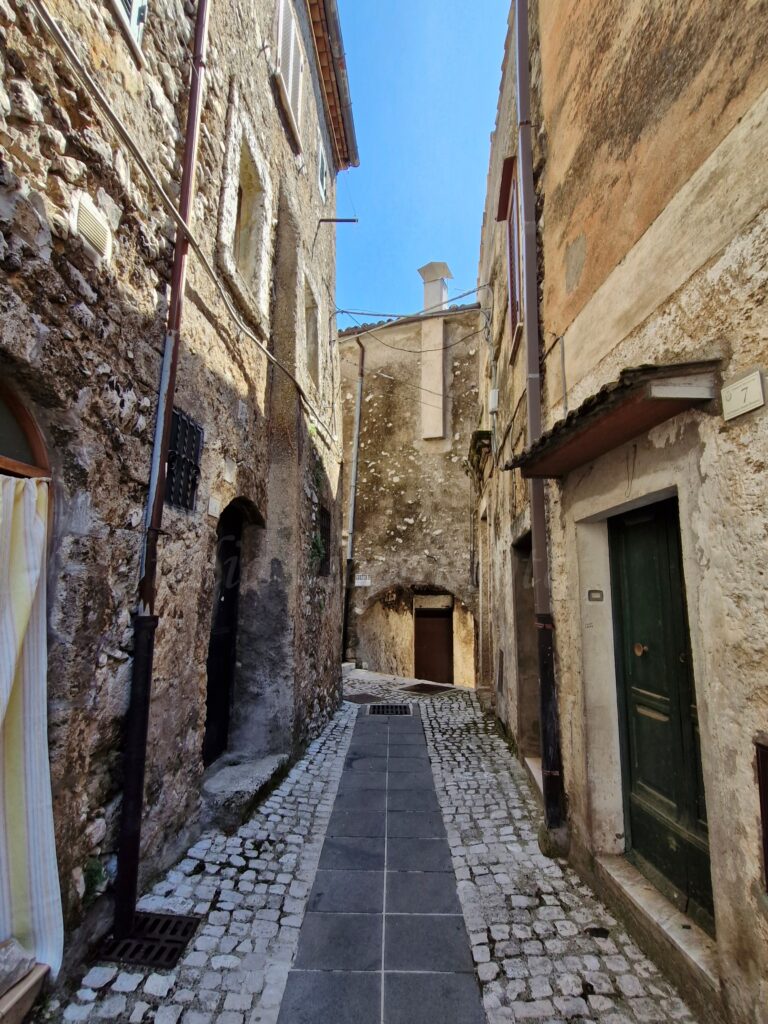
On our way to Manfredonia from the Rome airport, we decided to stay there for two nights (it ended up being 1 and 1/2). However, our plane was delayed by three hours and our GPS went haywire, leading us down some strange roads. We arrived at Trevi Nel Lazio at 1 a.m. Luckily, our host was waiting for us.
You can visit Trevi Nel Lazio (and explore it) for a few hours, but I think it could be a great alternative base for trips around Lazio if you’re wondering what to see near Rome. And in between, you can soak up the beauty of Italy, which is slowly disappearing under the mass of tourists and globalization. In the morning, we woke up by neighbors chatting and chatting, the bells of a nearby church, and the smell of freshly brewed coffee in the air. We had breakfast with some local old boys chatting about life.
Then we decided to see the waterfall, the Cascata di Trevi. With memories of beautiful waterfalls in Bosnia fresh in my mind, I was a bit skeptical, not expecting anything special, especially since it hadn’t been reaining for a while raining, so I thought there wouldn’t be any water.
The cascade is easy to reach; just enter the name into your GPS. The road to the waterfall is just behind (or before, depending on where you’re coming from) the restaurant located at the bend.
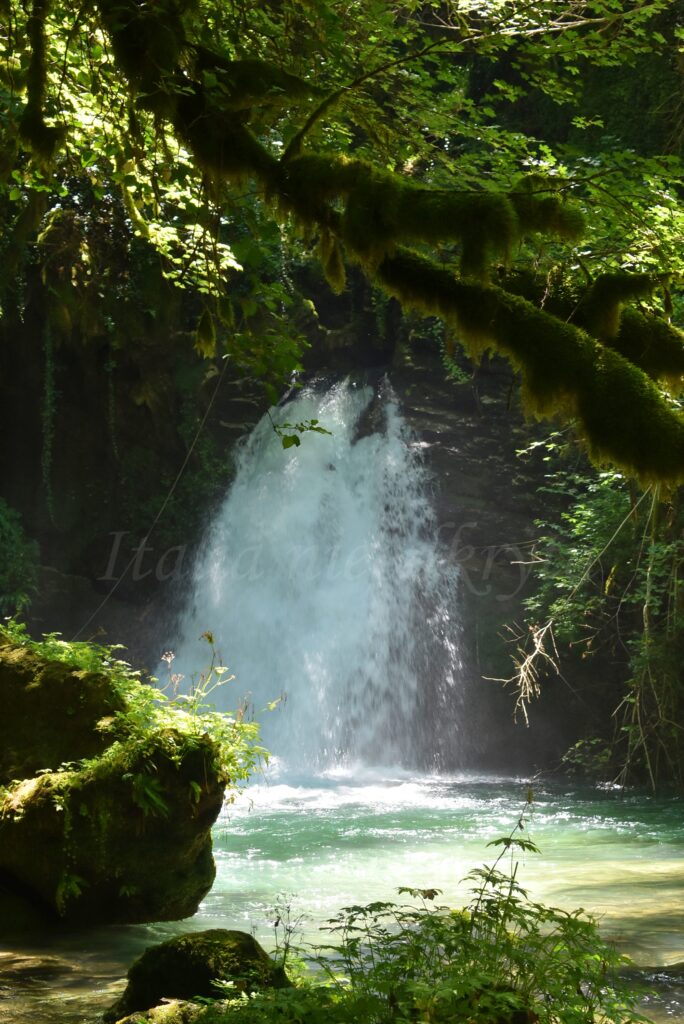
The path to the cascade is short and easy, though a bit slippery at times, so it’s worth watching your step. The natural surroundings and the Cascata di Trevi turned out to be very beautiful. To the left of the waterfall, there’s a path uphill (easier to climb than to descend), so you can see the waterfall from a different perspective; the river also forms a sort of swimming area there, and believe me, there’s nothing better than jumping into a cold mountain river on a hot day.
After the waterfall, we had lunch at Punto di Ristoro la Cascata.
What to see near Rome – Anagni.
Then we moved to Anagni to see the cathedral chapel. Anagni is about an hour’s drive southeast of the Italian capital, so it’s definitely on the list of things to see near Rome. In the Middle Ages, the city was a papal residence; in fact, four popes came from here. The most important monument in Anagni is the Romanesque cathedral from the turn of the 11th and 12th centuries and the crypt of St. Magnus, located beneath the cathedral floor. To visit it, you need to buy a ticket (9 euros) at the adjacent museum and make a reservation.
Reservation seems to be necessary, as you can visit during specific hours – the crypt lights are only turned on for 20 minutes; so you have to wait for the lights to illuminate, unless you want to see the chapel in the dark.
Is it worth it? In my opinion, the cathedral itself isn’t particularly interesting, and the museum is also rather dull, but the chapel is absolutely worth visiting and it sholuld be on your ‘what to see near Rome’ list . The crypt measures over 500 square meters and consists of three naves, three apses, and 21 painted vaults.
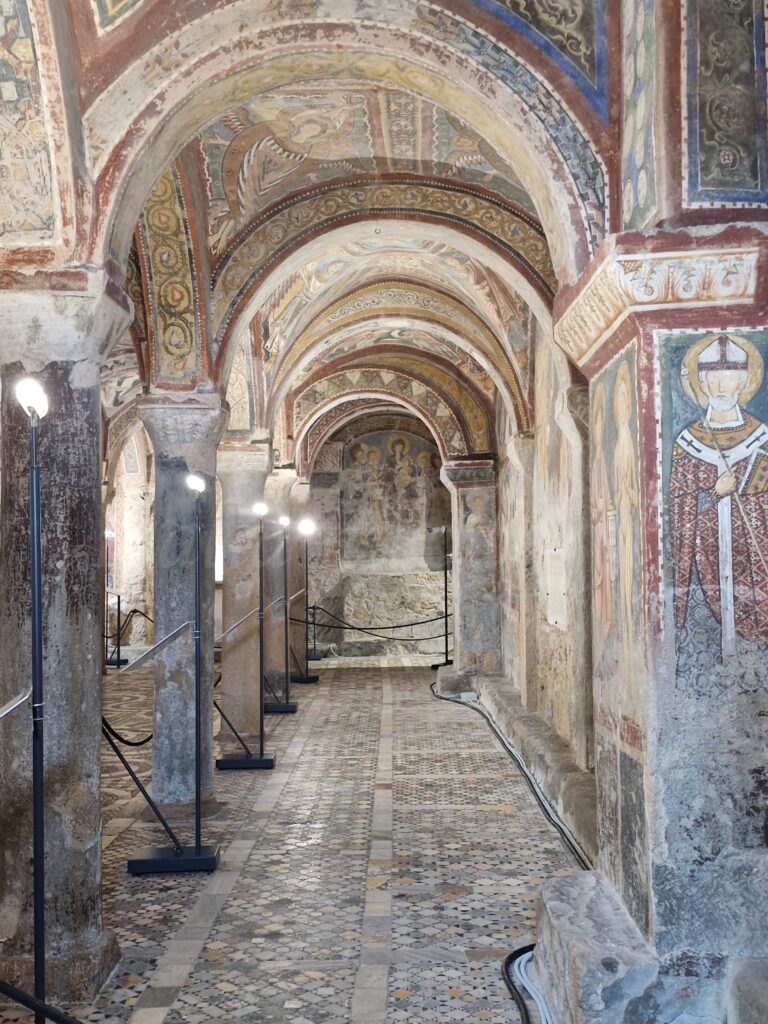
Historians believe that three artisans known as the “Anagni Masters” were responsible for the individual cycles of the crypt’s creation. The frescoes on the walls depict the history of human salvation from creation to the end of time, with apocalyptic overtones. Several walls are decorated with stories of local saints and martyrs. All scenes are depicted in vivid and exceptionally well-preserved colors and shades, with clear influences from both Rome and southern Italy.
In Agnani, we enjoyed some good gelato and strolled along the main street, Strada Vittorio Emanuele, admiring the mullioned windows and the large, double-arcaded loggia of the palace of Pope Boniface VIII. Further on is the 12th-century Town Hall, with a loggia added 300 years later. Upon reaching the Barekow House (no. 89), with its external Viterbo-style staircase and façade decorated by the 19th-century Swedish painter Albert von Barekow, we turned back.
Picturesque Ninfeo Bramante.
Wondering what to see near Rome, we drove to Genazzo to take a look at the Ninfeo del Bramante. Looking like the remains of a church, these picturesque ruins stand in the middle of a garden in Genazzo.
In ancient Greece and Rome, ninfeum meant a grotto or grove with a natural spring dedicated to nymphs.
In Genazzo’s case, the design of the ninfeum was commissioned by Donato Bramante, an extremely important Renaissance architect and painter. The wealthy individuals who commissioned this project in the early 16th century were the Colonna family – owners of numerous estates in the area.
The garden originally included a nymphaeum and a lake, divided into three water levels by four large steps. Today’s nymphaeum, or rather its ruins, is a hall (casino) overlooking the valley; behind the portico, on a raised floor, are three rooms with groin vaults. To the north of the central hall is an octagonal room with large, diagonally arranged niches, seats for resting in the shade, protected from the water jets, and a circular water tank in the center. Power must have come from a nearby spring. Two square rooms flank the walls, and two more lie behind them.
The ruins are impressive, but of course, they don’t capture the former beauty of this place, which wasn’t really used by any nymphs, but rather for contemplation, relaxation, and enjoying the surrounding nature. If you enjoy picturesque, abandoned places, this is another option for what to see near Rome.
In the evening we returned to Trevi Nel Lazio, where locals were busy preparing for a local festival featuring a bicycle race and a feast of food.

